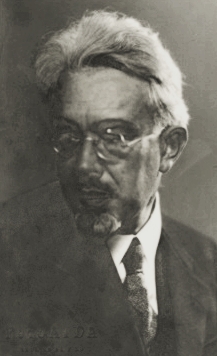Curt Sachs facts for kids
Quick facts for kids
Curt Sachs
|
|
|---|---|

Sachs in 1935
|
|
| Born | June 29, 1881 Berlin, German Empire
|
| Died | February 5, 1959 (aged 77) New York, New York, US
|
| Education | Französisches Gymnasium |
| Alma mater | Berlin University |
|
Notable work
|
|
| Scientific career | |
| Institutions |
|
Curt Sachs (born June 29, 1881 – died February 5, 1959) was a German musicologist. A musicologist is someone who studies music in a scholarly way. He was one of the people who helped create modern organology. Organology is the study of musical instruments. One of his most important contributions was the Hornbostel–Sachs system. He developed this system with Erich von Hornbostel to classify musical instruments.
Contents
Biography
Early Life and Studies
Curt Sachs was born in Berlin, Germany. When he was young, he studied piano, music theory, and how to compose music. He went to Berlin University and earned a doctorate in 1904. His studies were first about art history, focusing on sculptures. But soon, he became more interested in music.
Becoming an Expert on Instruments
Sachs eventually became the director of the Staatliche Instrumentensammlung. This was a big collection of musical instruments in Germany. He worked hard to organize and fix many of the instruments there. This is when he really started his career as an organologist, someone who studies musical instruments.
The Hornbostel-Sachs System
In 1913, Sachs published a huge book called Real-Lexicon der Musikinstrumente. It was one of the most complete guides to musical instruments in 200 years! The next year, he and Erich Moritz von Hornbostel published a new way to classify musical instruments. This system is now known as the Sachs-Hornbostel system.
Even though it has been updated and discussed over the years, it is still the most used system. It helps ethnomusicologists and organologists understand and group instruments. Ethnomusicologists study music from different cultures around the world.
Moving to the United States
When the Nazis came to power in Germany in 1933, Sachs was forced to leave his jobs. This happened because he was a Jew. So, he moved to Paris, France, and later to the United States. He settled in New York City.
From 1937 to 1953, he taught at New York University. He also worked at the New York Public Library. In 1953, he became a professor at Columbia University, where he worked until he died in 1959. He was also the president of the American Musicological Society from 1948 to 1950.
Important Books and Legacy
Curt Sachs wrote many books about rhythm, dance, and musical instruments. One of his most important books is The History of Musical Instruments (1940). This book gives a full overview of musical instruments from all over the world and throughout history. Another important book was The Rise of Music in the Ancient World (1943).
Even though new research has added to his work, his books are still considered very important for anyone studying music history.
Sachs passed away in 1959 in New York City. To honor his contributions, the American Musical Instrument Society created the Curt Sachs Award in 1983. This award is given every year to someone who has made great contributions to the study of musical instruments.
See also
 In Spanish: Curt Sachs para niños
In Spanish: Curt Sachs para niños
- Berlin Musical Instrument Museum
- State Institute for Music Research

